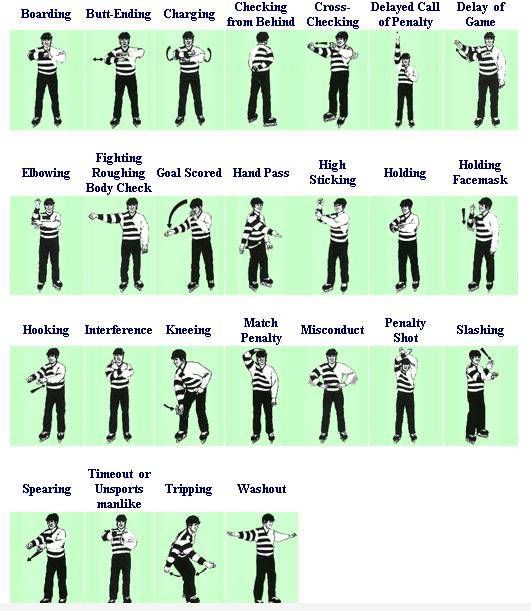Rules of the Game
Subscribe to our Newsletter
Tri-City Inline Hockey League Rule Book:
Please click on the Handouts tab on the main menu to find the TCIHL supplemental rule book.
Anyone under 18 on the rink MUST wear a helmet. No matter on or off skates.
Slamming the stick:
1st offense is a player warning for that game
2nd+ offense is a 2min penalty for the player
Foul language(2):
Toward a person:
1st offense is a 2min penalty for the player
2nd+ offense in same night 10min penalty for player
Anger at ones self: (when a player is mad at himself for missing a pass/shoot/...)
1st offense player warning
2nd+ offense 2 min penalty
Here is an explanation of the rules and examples of what the refs call:
HOOKING:
· A player cannot use his/her stick against an opponent’s body (puck carrier or non-puck carrier) to gain a positional advantage. Examples include:
- tugs or pulls on the body, arms or hands of the opponent which allows for the space between the players to diminish
- placing the stick in front of the opponent’s body and locking on – impeding the opponent’s progress or causing a loss of balance.
- stick on the hand/arm that takes away the ability for the opponent to pass or shoot the puck with a normal amount of force
TRIPPING
· A player cannot use his/her stick on the legs or feet of an opponent in a manner that would cause a loss of balance or for them to trip or fall. Examples include:
- placing the stick in front of the opponent’s legs for the purpose of impeding progress, even if on the ice, with no effort to legally play the puck
- placing the stick between the legs of the opponent (can opener/corkscrew) that causes a loss of balance or impedes the progress of the opponent.
HOLDING
· A player cannot wrap his/her arms around an opponent or use a free hand to clutch, grab or hold the stick, jersey or body on the opponent in a manner that impedes their progress. Examples include:
- wrapping one or both arms around the opponent along the boards in a manner that pins them against the boards and prevents them from playing the puck or skating
- grabbing the opponent’s body, stick or sweater with one or both hands
- using a free arm/hand to restrain or impede the opponent’s progress
INTERFERENCE
· A player cannot use his/her body (“pick� or “block�) to impede the progress of an opponent with no effort to play the puck, maintain normal foot speed or established skating lane. Examples include:
- intentionally playing the body of an opponent who does not have possession or possession and control of the puck.
- using the body to establish a �pick� or “block� that prevents an opponent from being able to chase a puck carrier
- reducing foot speed or changing an established skating lane for the purpose of impeding an opponent from being able to chase a puck carrier
· Allowed Actions
- a player is entitled to the ice he/she occupies as long as they are able to maintain their own foot speed and body position between opponent and puck
- players are allowed to compete for body position using their strength and balance in front of the goal or along the boards
SLASHING
· The use of the stick will be limited to only playing the puck. Any stick contact, as a result of a slashing motion, to the hands/ arms or body of the opponent will be strictly penalized. In addition, hard slashes to the upper portion of the stick (just below the hands) of an opponent, with no attempt to legally play the puck, shall also be penalized.
High Sticking:
There are two types of high sticking. One when a player hits another player with the stick, and two when a player hits the puck in the air with the stick:
1. A player who accidentally (2minute penalty) or intentionally (5minute penalty) contacts an opponent above the normal height of his shoulders with a high stick shall be assessed a penalty.
2. Contacting the puck with the stick above the normal height of the shoulders is prohibited. When it occurs, play shall continue; if the offending team touches the puck first then the play should be blown dead and have a face off. If the defending team touches the puck first the call is washed off (play continues).
Boarding and Body Contact:
A penalty shall be assessed to any player who intentionally bodies, pushes, shoves, stands in front of an opponent for the purpose of making contact, and/or does not avert body contact with an opponent.
-“Rolling� an opposing puck carrier along the boards is not a penalty.
These are just some of the rules, but these are the rules usually called at Tri-City.
Above information came from http://www.usahockey.com/ihoa//
Tied Game Format at TCIHL:
If any play-off or championship game is tied after regular play the game will go into a 10 minute sudden death period non stop clock with a one minute break between 2nd period and OT (over time). If it is still tied the game will proceed to a shoot-out. Each team will choose four skaters to do shoot out (visiting team shoots first). If the game is still tied after all four skaters go then the game will go into sudden death shootout. The same four players will go. In sudden death if one team scores, but the other team doesn’t score, then the game is over. After the same four players go and there still isn’t a winner then the rest of the bench goes. If after overtime a player is in the penalty box, that player CANNOT participate in the shootout.




